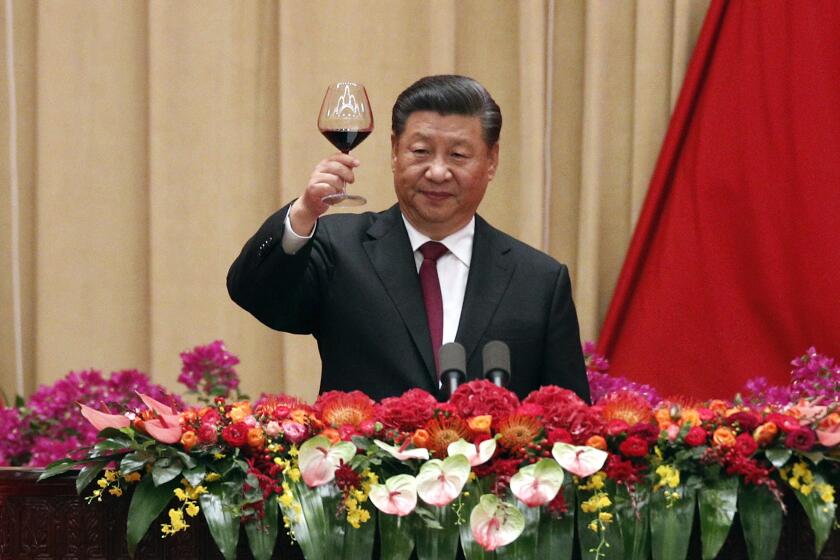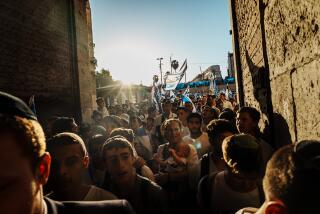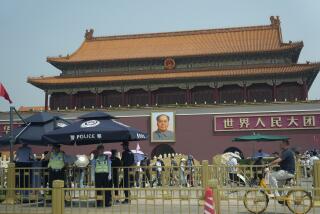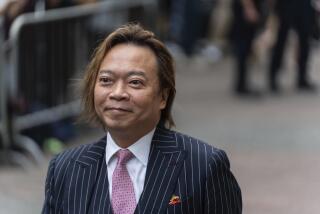‘No national day, only national grief’: Police chief defends officer’s close-range shooting of Hong Kong protester
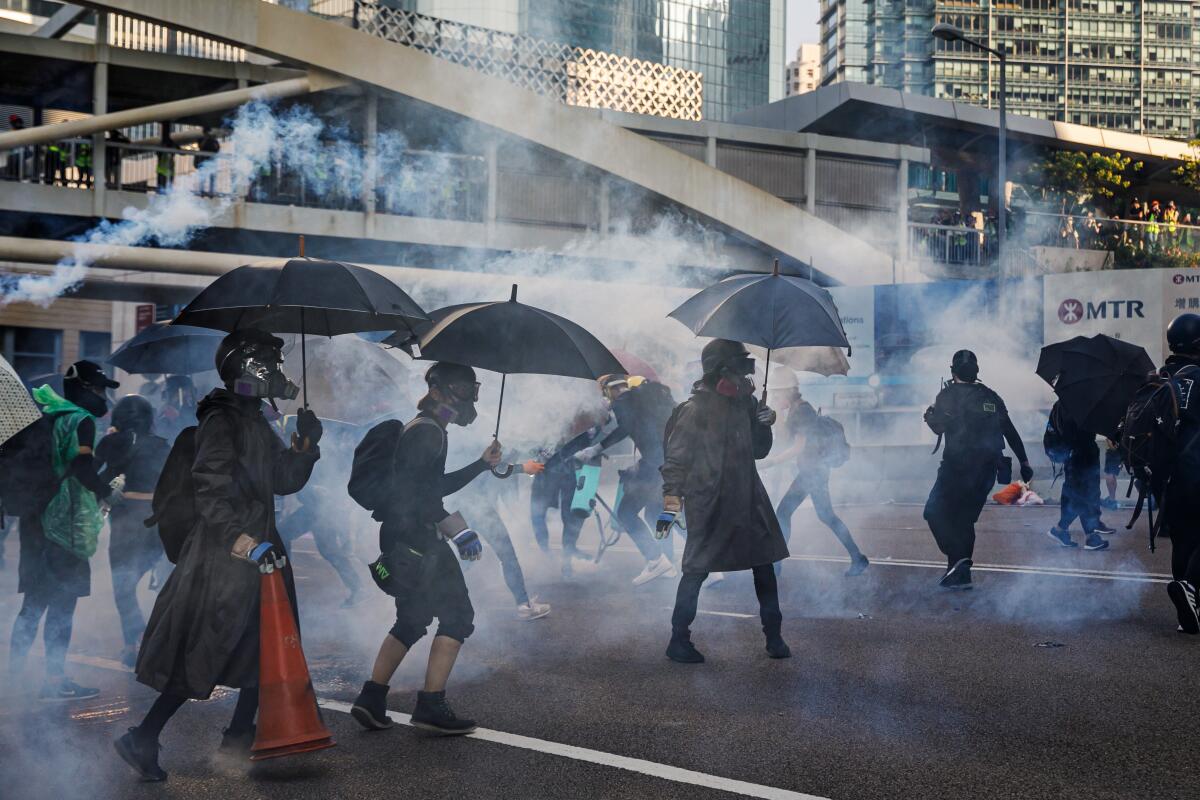
- Share via
HONG KONG — It was a close-range gunshot seen around the world.
On Tuesday, a police officer shot a teenager at point-blank range in Hong Kong, the first time authorities had used live ammunition to stop a demonstrator. The 18-year-old was shot in the chest during protests against China’s National Day.
“My chest is hurting. I need to go to the hospital,” the teenager gasped as he lay on the ground, pulling down his respirator as blood gushed from his chest, in a video immediately shared thousands of times on social media.
For a moment, the city paused, tens of thousands of protesters, journalists, medics and residents stunned at the news that police had shot a Hong Konger with a real gun for the first time.
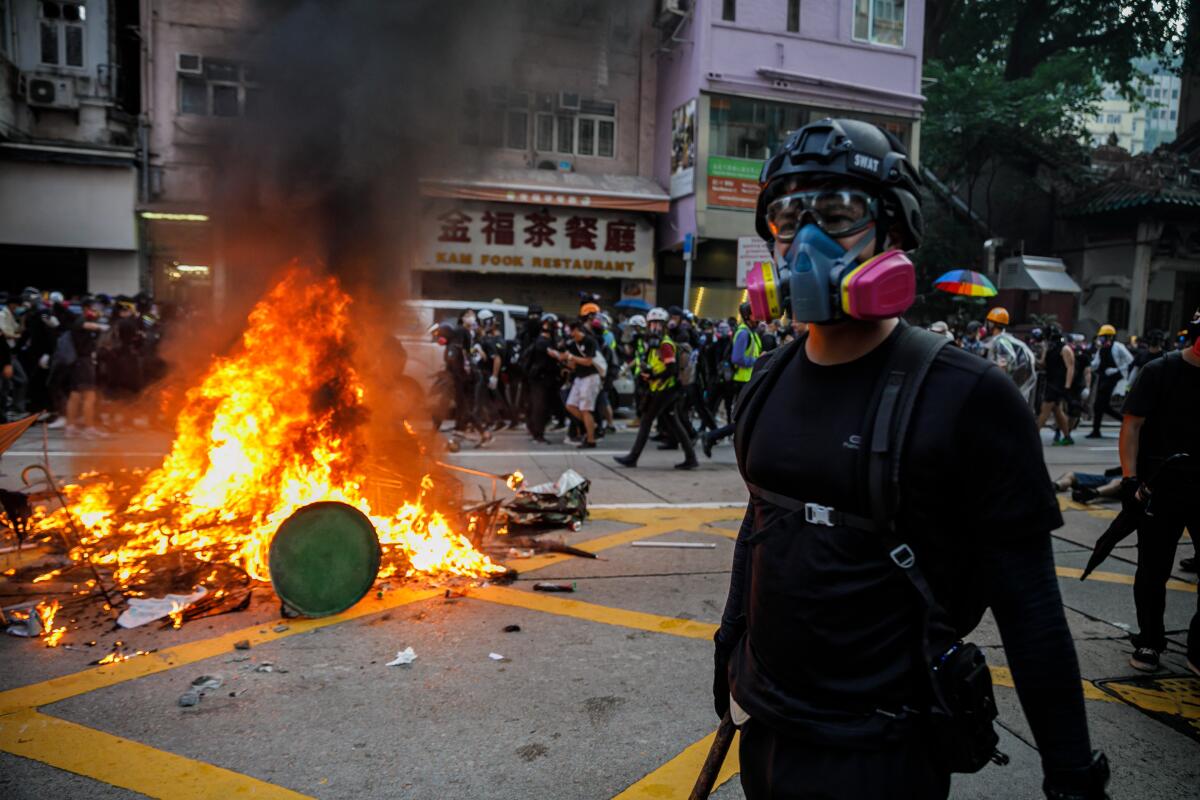
Then they went back into battle. “Dirty cops!” protesters screamed as the sky darkened with volleys of tear gas. Black smoke curled into the air from blazing barricades and Molotov cocktails. Protesters smashed windows of a government office as police blasted the crowds with capsicum-laced blue water.
“If they killed someone, that means we get to kill them. An eye for an eye and a life for a life,” said Jack, 25, a protester who paused while running from police. “More people will die.”
The protester who was shot was taken to the hospital in critical condition. Authorities said Wednesday morning that his condition had improved. Meanwhile, hundreds of people held a sit-in outside his high school in protest.
Armored police squads chased protesters down the streets, jumping and beating them with batons. The protesters thrashed on the floor, yelling their names and ID numbers.
At home, supporters watching on live feeds began to cry.
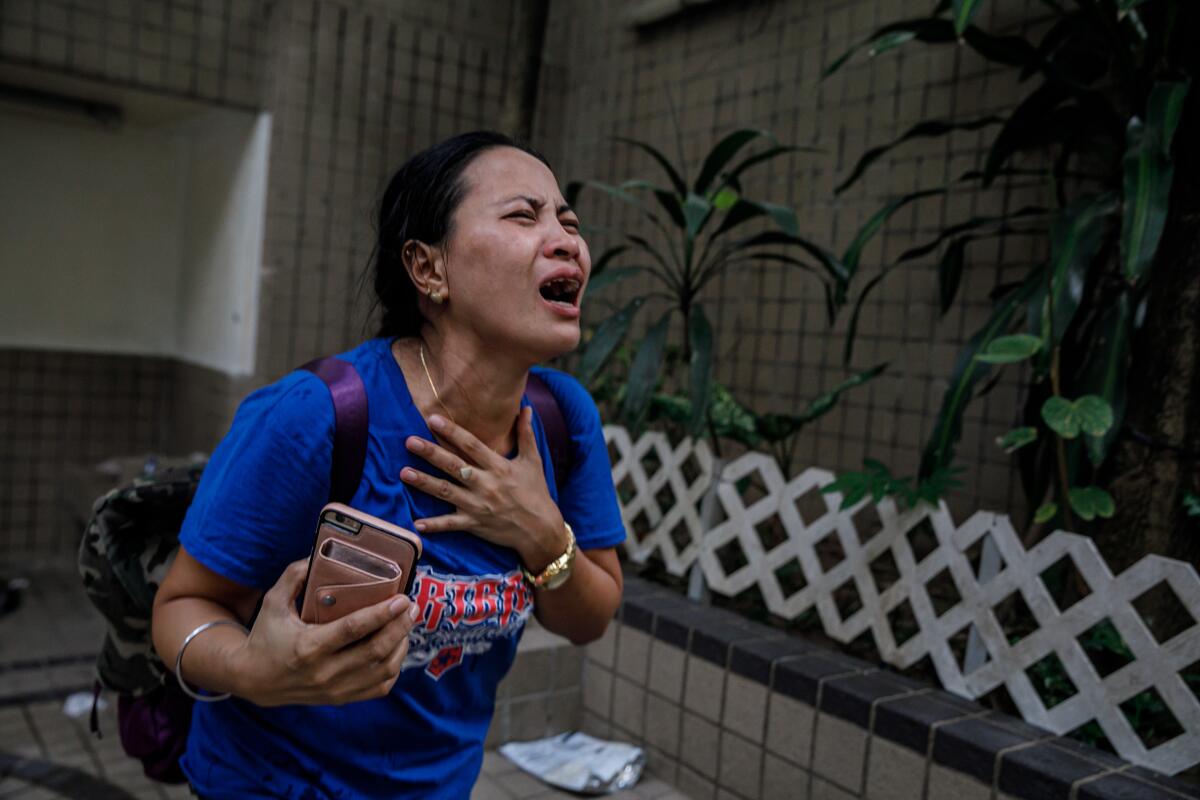
Hong Kong’s police chief, Stephen Lo, condemned protesters in a news briefing and said the police shooting was “lawful and reasonable” because the gun-wielding officer had acted in self-defense as protesters assailed officers with sticks.
Police arrested more than 180 people Tuesday on various charges, including rioting, possession of offensive weapons and assault of police, he added, including the teenager who was shot. The protester underwent surgery to remove the bullet from between his heart and lung. Police waited outside the operating room.
Government warnings against “terrorism” and a transportation lockdown did not stop tens of thousands of Hong Kong protesters marching in their own version of a National Day parade — one demanding democratic reforms and government accountability — in rejection of the Communist Party system of governance.
As Beijing celebrated the Communist Party’s 70th anniversary of rule over China with a massive military parade, Hong Kong’s protesters massed along central thoroughfares and in several suburban districts, waving black versions of the Chinese flag and wearing Guy Fawkes masks.
They raised open palms in the air, chanting, “Five demands, not one less” and “Free Hong Kong, revolution now.”
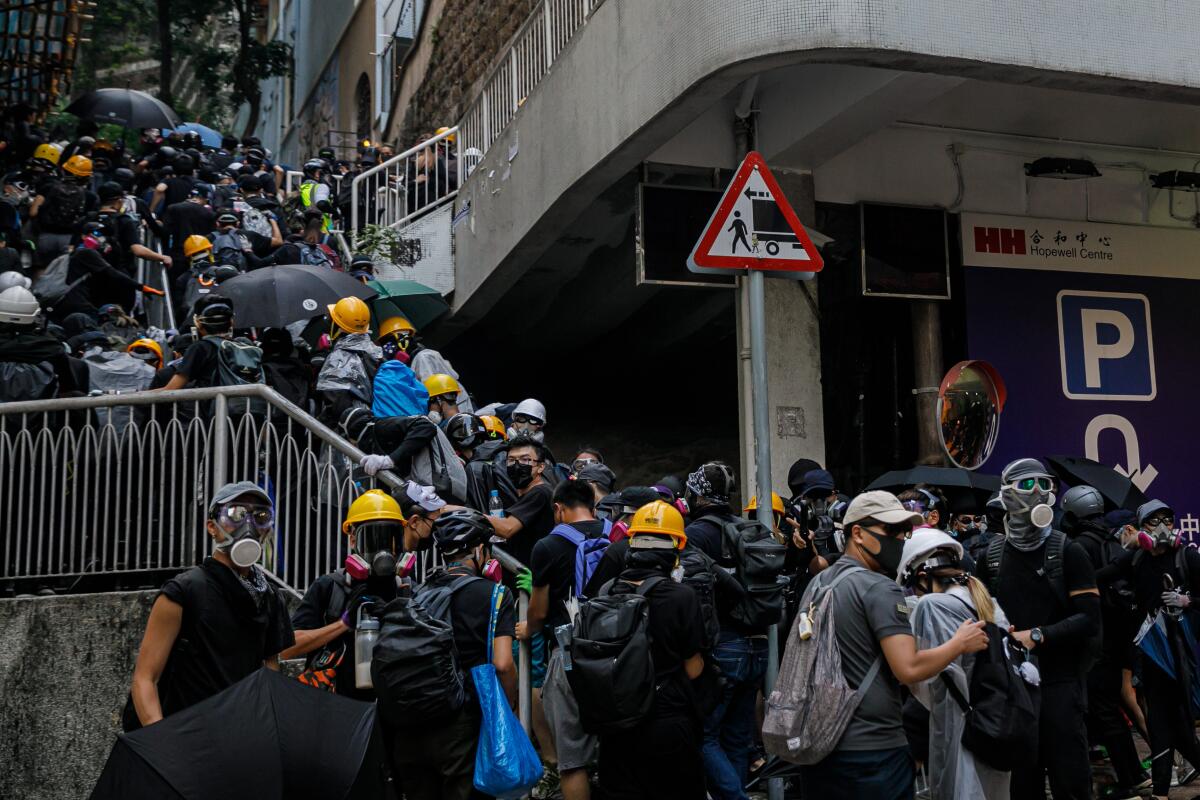
It was a day of defiance against the Communist Party’s celebration of its “national rejuvenation,” with many protesters calling it a day of “national grief,” wielding posters decrying human rights violations and mass deaths under the party’s rule.
“The so-called National Day is a day for mourning. We are mourning those who sacrificed for democracy in China,” said former lawmaker Lee Cheuk-yan as the unauthorized marches began. “It’s 70 years of suppression. We mourn that, and we also condemn the fact that the Hong Kong government together with Chinese government denied the people of Hong Kong the right to democracy.”
The morning started off quietly, with stacks of newspapers bearing bright red ads celebrating the 70th anniversary of the People’s Republic sitting in front of locked storefronts covered with graffiti against “ChiNazis.” Eleven major subway stations were shut down, along with most shopping malls, which have been sites of bloody conflict between protesters and police.
President Xi Jinping leads a parade designed to send a confident message that China’s military has modernized rapidly, amassing advanced military technology to rival U.S. power.
Police had arrested 200 people in the previous three days, including a local news reporter, an activist and a pro-protest actor, and warned Monday that they expected protesters to take “hard-core” action such as arson and killing in police disguise.
Officials held a flag-raising ceremony indoors with no public access. Hong Kong Chief Executive Carrie Lam was out of town, attending Beijing’s military parade in Tiananmen Square.
Early in the morning, dozens of pro-Beijing demonstrators from Hong Kong and the mainland unfurled a large Chinese flag along the harbor.
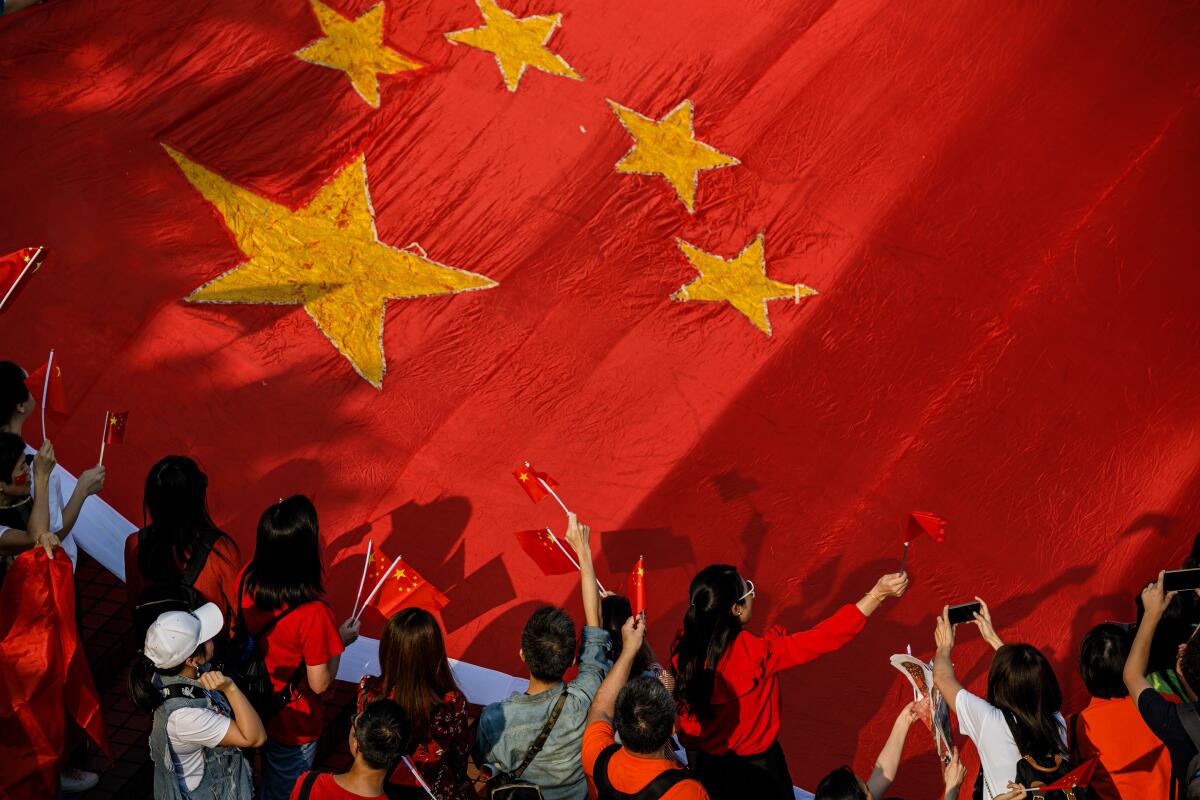
“As Chinese, we have to have our national pride. We have to love our country more and we want our country to be stronger,” said Zhang Zhusheng, 65, a mainlander from Xian who said he’d come to Hong Kong expressly to celebrate National Day.
But they were soon outnumbered by tens of thousands of protesters of all ages who poured into the streets across several districts of the city.
Pun, 21, a protester in the Sha Tin suburb who asked not to use his full name for protection from authorities, said he hadn’t watched Beijing’s military parade.
“In my mind I know it’s my country, but I don’t feel it in my heart. It looks more like North Korea than Hong Kong,” he said.
The last four months of constant protest despite conflict with police had given him a sense of deep pride in being a Hong Konger, he added.
“There’s nothing special about today or July 1 or Jan. 26,” he said, referring to the dates when Chinese and British sovereignty were respectively established in Hong Kong.
“Hong Kong doesn’t have its own national day yet, just the days we were colonized. When we do, I’ll celebrate that.”
In Wan Chai, a middle-aged couple sat on the sidewalk, watching a live feed of police firing tear gas at protesters as crowds clad in black and singing protest anthems marched by. Kenny Pan, 50, had a heart-shaped China flag sticker on his phone.
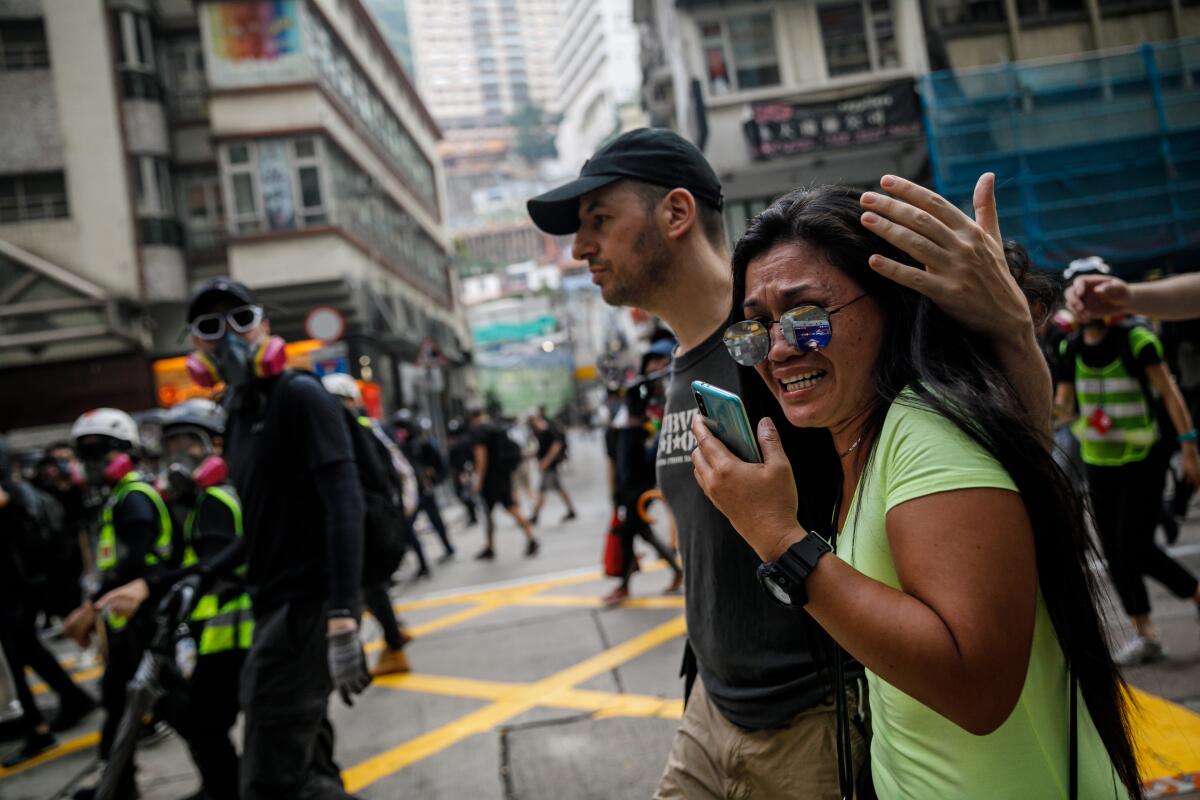
“These two things don’t contradict each other. I love my country — doesn’t mean I cannot ask for freedom,” he said, adding that the government was trying to scare people away from marching by “brutally beating our young people.”
“They know the root cause, but they don’t want to answer for the root cause,” he said. “Young people want to say what they don’t like. Young people ask for a better future. They just want to air their concerns. I appreciate that.”
Protesters hung up an image of Chinese leader Xi Jinping as a target, spray-painted his face black and wrote on the walls: “May the heavens destroy the Communist Party” and “Xi, go hang yourself.”
Anger at the lack of accountability for local police has fused with hostility toward the Communist Party’s human rights abuses, a key part of Hong Kong society’s shared consciousness that the territory is the only place in China where the internet remains open and where the 1989 Tiananmen Square massacre is commemorated each year.
“We don’t want Hong Kong to become like Tibet,” said Nick, 22, a protester waving Tibetan and blue United Nations flags over a highway. China was interfering with Hong Kong’s internal policies and creeping toward total control, he said.
“The chief executive represents the Chinese government, not our citizens. That’s why we have to fight for our rights. We are not having a celebration of the Chinese government.”
Others marched with Republic of China flags, waving what has become Taiwan’s flag but once represented the Nationalist government that ruled China after overturning the Qing Dynasty in 1911.
“This is the true China,” said Kent, 50, adding that he wanted Hong Kongers to know there was another China in history. “If they don’t understand this history, they can easily be misled by the government.”
Johnny, 24, said he was waving the Republic of China flag as an alternative version of China — the democratic system in Taiwan today. “The Communist Party government is built from blood and killing people, Chinese people, in order to maintain their dictatorship,” he said.
“The Republic of China, Taiwan, represents freedom and democracy. Only this can represent all Chinese people.”
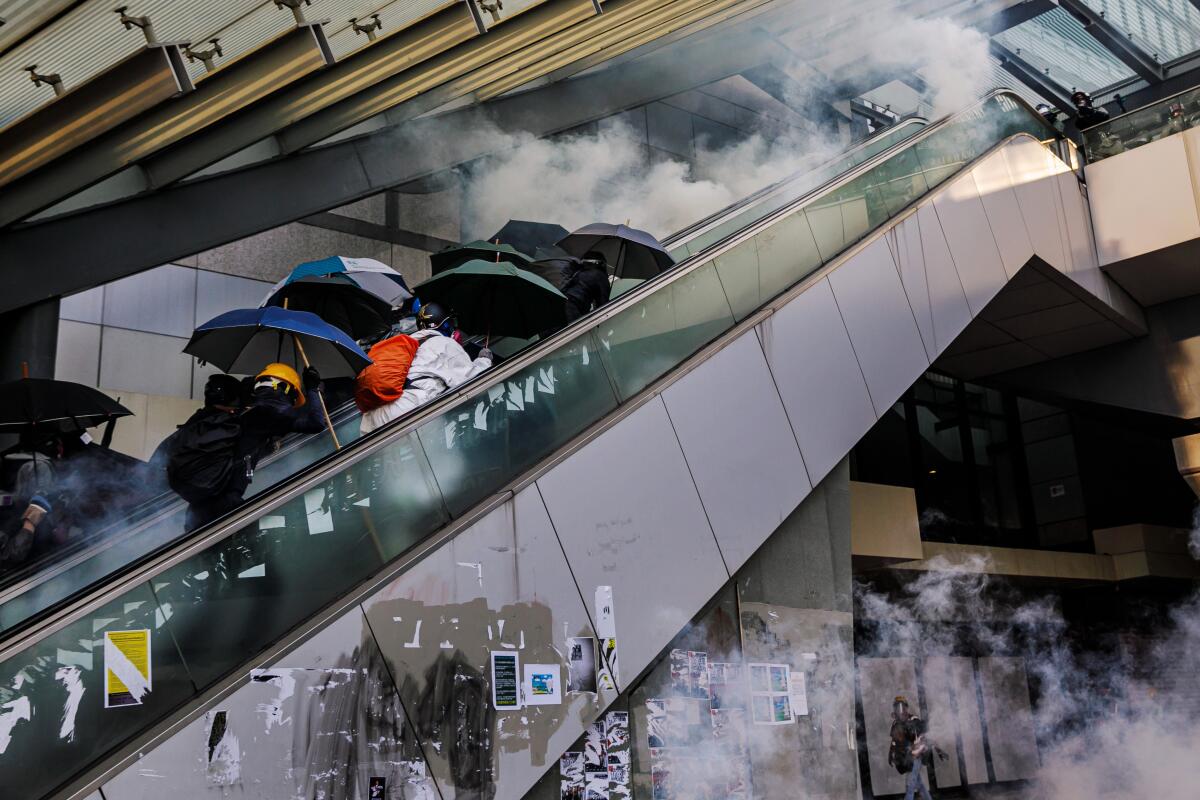
Within an hour of the marches’ official start, riot police began charging and firing tear gas at protesters. Street clashes began in several districts and soon took over large swaths of the city.
“The government is using the police as a tool to destroy Hong Kong and the Hong Kong people and they take their instructions from the CCP,” said protester Frank, 32, referring to the Chinese Communist Party. He was carrying a black flag that said “Free Hong Kong, revolution now.”
“We don’t feel anything today except anger,” he said.
As protesters clashed with police into the night, a woman in her 50s offered energy bars and water bottles to demonstrators clustered on the sidewalks. She gave only her first name, Alice, and said her 27-year-old son was also among the protesters.
“The youngsters are not going to withdraw. It’s really up to the government in Beijing to make a decision,” she said, adding that Lam, Hong Kong’s leader, was a “puppet.” She pulled out a picture on her phone of Lam wearing a red jacket, smiling in Beijing.
“This is just the flesh and blood of Hong Kong people, in particular Hong Kong youngsters,” the mother said. “She is all covered in blood.”
Su is a Times staff writer and Ho Kilpatrick a special correspondent.
More to Read
Sign up for Essential California
The most important California stories and recommendations in your inbox every morning.
You may occasionally receive promotional content from the Los Angeles Times.
